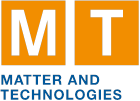Speaker
Description
Laser wakefield accelerators (LWFA) feature unique electron bunch characteristics, namely micrometer beam size with duration ranging from a few fs to tens of fs. The longitudinal profile of such ultra-short electron bunches intricately depends on the ultrafast injection dynamics and laser-electron beam interaction during acceleration. Detailed knowledge of the electron bunch temporal profile is critical for the design of future table-top x-ray light-sources from laser- plasma accelerators, as well as for the characterization of ultrashort electron beam probes or CTR-based THz sources.
Spectral measurements of broadband transition radiation from LWFA electron bunches passing through a metal foil are especially promising for non-destructively analyzing ultrashort longitudinal bunch characteristics with single-shot capability. Our broadband, single-shot spectrometer combines the transition radiation (TR) spectrum in UV/VIS (250-1000nm), NIR (0.9-1.7μm) and mid-IR (1.6-11.35μm). The spectrometer is able to characterize electron bunches with charges as low as 1 pC and resolve time-scales from 0.4 to >20 fs.
We present recent experimental results of different LWFA injection mechanisms, such as self-truncated ionization-injection, density-shock-assisted injection and self-injection. By analyzing the transition radiation spectra and reconstructing electron bunch profiles including error analysis, we determine electron bunch profiles including sub-fs beam micro-structure of the respective injection regimes. Based on hundreds of LWFA shots, we show systematic statistics on bunch duration and peak currents with respect to electron injection-method, gas density and nitrogen-doping concentrations.
In the outlook, we put these results in context of complementary results achieved using multi-spectral near-field images of CTR which are more sensitive to the transverse than the longitudinal electron bunch distribution. We outline steps needed to tackle the challenges of analyzing more complex beams, with the goal of characterizing the 3D distibution of LWFA bunches.
| Speed Talks | Normal |
|---|

